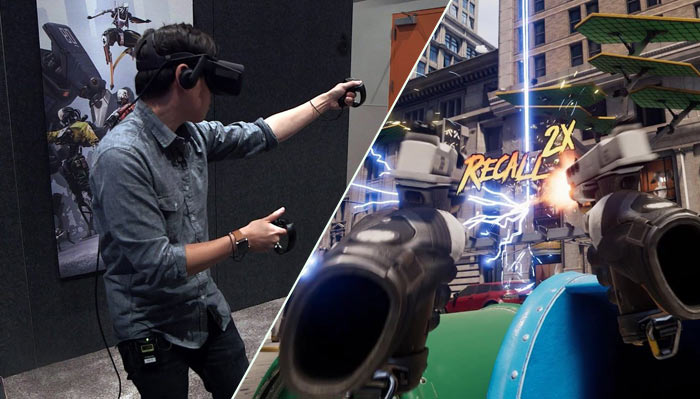About six weeks ago, coinciding with GDC 2017, we first learned about Epic Games' work in embracing Forward Rendering. Modern video games tend to employ the Deferred Rendering method which does all of the geometry work first and then shades screen pixels. Forward Rendering is an older technique but "provides a faster baseline, with faster rendering passes, which may lead to better performance on VR platforms," explains Epic.
In the video below AMD RTG Technical Marketing Specialist, Gilbert Leung, shows us an A-B demonstration about why we are going 'back to the future' and favouring Forward Rendering for VR experiences.
Leung runs two identical PC systems but they are using different render path options in Epic Games’ Robo Recall VR game. In the test you can see that the Forward Rendering switched game provides significantly better frame times (7 to 8ms rather than about 11 to 12ms). Leung asserts that not only is the action much smoother in the Forward Rendering demo, but in-game graphic details and colours are improved too.
You will note that Forward Rendering is described above as a 'compromise'. That because Deferred Rendering has some benefits such as more rendering features and better handling of several dynamic light sources. However, as well as the speed advantages, Forward Rendering "provides better anti-aliasing options," which can lead to better overall visuals.

It's not only Epic Games and its Unreal Engine 4 which is being adapted to support a Forward Rendering path, thanks to the influence of VR. AMD is working with various other developers to speed up their VR experiences this way. Furnthermore, Unity 3D also supports this render path option and provides an interesting features comparison table to help developers choose.













